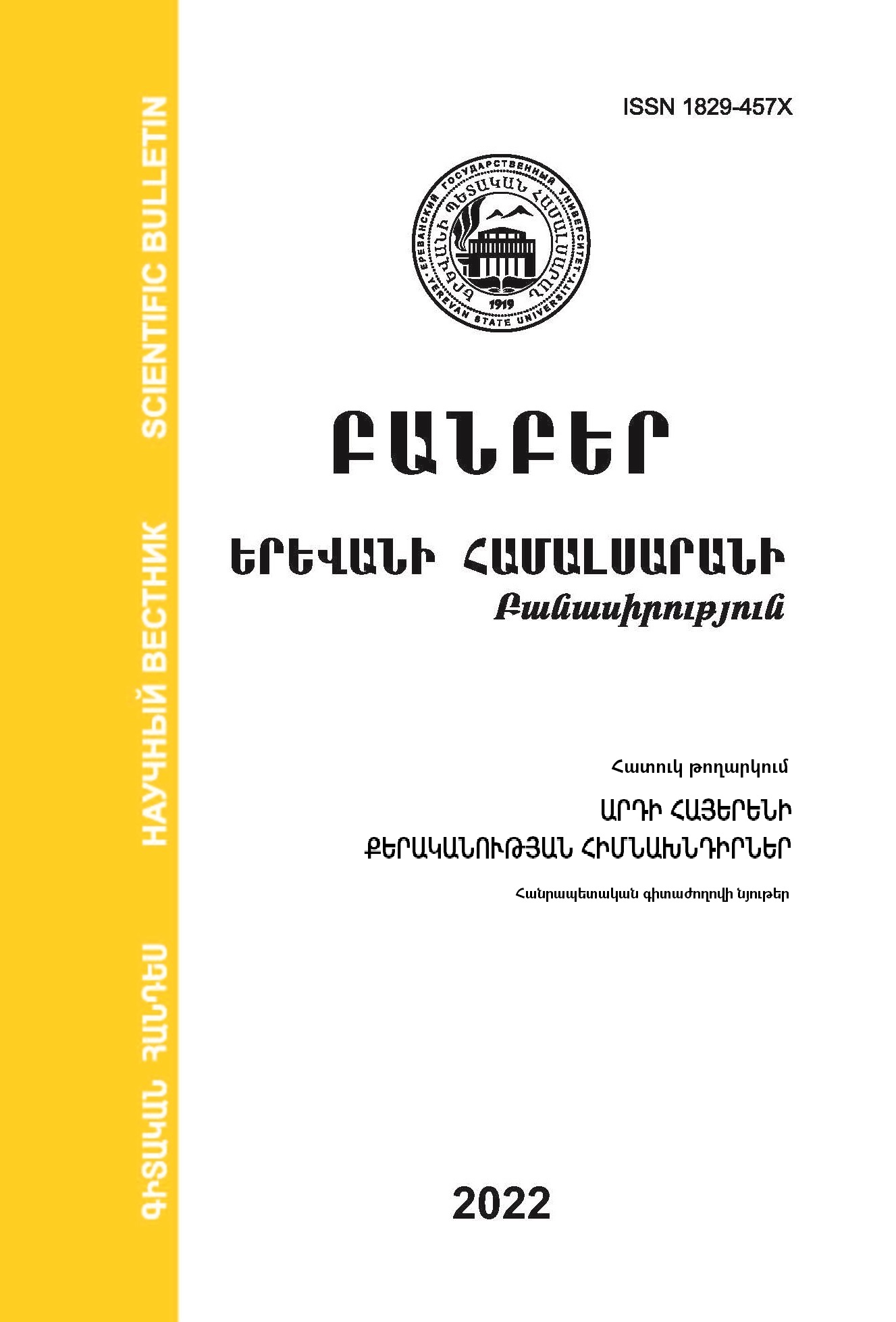Completion of the Verbs to Stand and Sit in Phraseological Units
DOI:
https://doi.org/10.46991/BYSU:B/2022.sp2.110Keywords:
addition, phraseological unit, circumstance, phrasal convergence unity union, conjugationAbstract
The study of the possibilities of completing the neuter antonym verbs to the Armenian verbs to stand and sit shows that these verbs require additional additions of place, form and size. In one case, the latter are expressed by morphemes and conjunctions, and in the other, by an invariable part of speech. Some additions expressed by morphemes have pairs expressed by other morphemes present in the dialect layer of the Armenian language. The phrases formed by the verbs in question are either colloquial or have a colloquial variant.
The verb to sit is endowed with wider connective possibilities, which in some sentences has a double gender - connect and cross, thanks to conjunctive verbs, expresses the grammatical meaning of the passive gender, requiring the complement of the gender.
References
Բադիկյան Խ․, Ժամանակակից հայերենի դարձվածային միավորները, Երևան, 1986։
Գալստյան Ս․, Հայոց լեզվի դարձվածաբանական բառարան, Ե․, 1975,
http://www.nayiri.com/imagedDictionaryBrowser.jsp?dictionaryId=55 ։
Մուրվալյա նԱ․, Հայոց լեզվի դարձվածաբանություն և բայակազմություն, Ե․, 1959։
Ջահուկյան Գ., Ժամանակակից հայոց լեզվի տեսության հիմունքներ, Ե․, 1974:
Քոսյան Վ., Ժամանակակից հայերենի բառակապակցությունները, Ե., ՀՍՍՀ ԳԱ, 1975:
Шанский И.М. Фразеология современного русского языка, изд. 2-е «ВШ», М., 1969. Изд. 3-е, М., 1985.
Downloads
Published
How to Cite
Issue
Section
License
Copyright (c) 2022 Bulletin of Yerevan University

This work is licensed under a Creative Commons Attribution-NonCommercial 4.0 International License.

